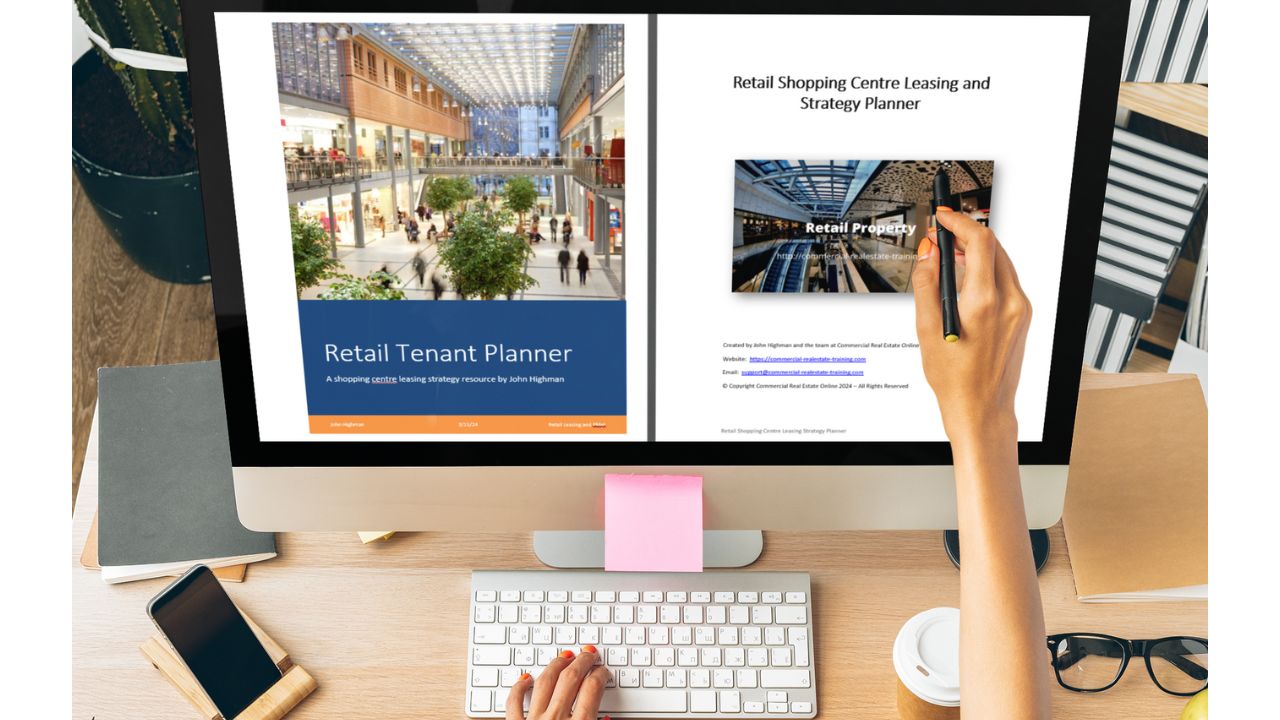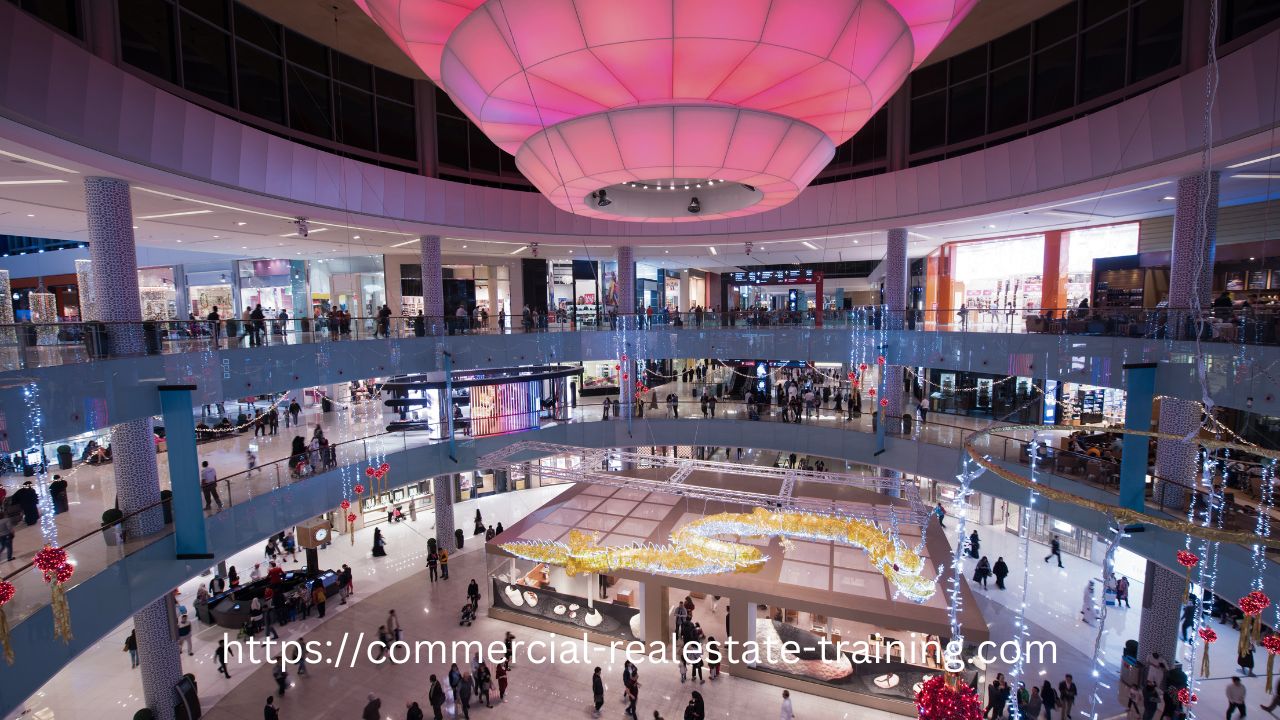Managing Shopping Centre Vacancies and Reducing Tenant Turnover
Leasing and managing a retail shopping centre of any size today is challenging. Experience says that vacancies will happen in all retail properties, and some tenants will be more successful than others in trading.
Of course, the retail shopping environment is changing and will continue to do so, given the impact of online shopping. Some shopping centre tenants will be under pressure because of that.
Astute leasing and centre managers are aware of the issue and constantly shape the tenant mix to find better retail tenants and balance it.
For a shopping centre, a class of investment property subjected to ‘change and churn’ reasonably regularly, having a business plan is not just a good idea; it’s a necessity.
A thriving shopping centre usually has a business plan each financial year to support and guide decisions in many categories. Let’s delve into that.

Agents Join Us Here
Let us give you more real estate ideas and solutions
If you are an agent or broker in commercial real estate, we would love to share our ideas and strategies to help your sales, leasing, and property management activity. Check it out.
Work Ahead of Time
Before the beginning of any financial year, decisions and benchmarks can be set across all premises, rental budgets, lease negotiations, and occupancy changes. It is an all-encompassing review and highly recommended.
Landlord and centre management decisions can be processed and set for the investment targets the property could or should reach at the end of the year. The management and leasing of the retail property then become a strategically definite process. Mistakes are minimised and opportunities are seized.

Property Performance Planning
Here are some valuable ideas to merge into your property performance plan, which will help you monitor and reduce tenant turnover.
1: Lease Situations and Facts:
When managing a retail property, it’s crucial to consider the lease terms and conditions. This allows you to align the property and its shops with market rent and leasing conditions.
It’s also essential to assess the competition from nearby properties and consider how to make your property more attractive to tenants and customers. This marketing consideration can form the basis of a comprehensive marketing plan.
2: Technology plays a significant role in managing a shopping centre:
One effective way to leverage it is using ‘door counters’ at all entrance points. This technology provides valuable insights into customer shopping patterns, such as the busiest days, popular locations, and customer movement.
These insights can guide decisions and strategies for improving tenant turnover and property performance.
3: Keep sales figures across the tenant mix:
In a more significant shopping centre, you will have the opportunity (if the leases allow) to track the sales by tenant group and merchandise group. That will show how customers use the property and what they like to purchase.
Sales figures in retail are individually confidential, but a broad analysis across the merchandise groups to create averages by group will show you trends. From sales figures you will know what customers are doing, where they are shopping, and what tenants are your ‘strong’ magnets for retail trade and customer interest.
4: Understand the regulations for tenant occupancy:
Rules, regulations, and controls apply to the leasing process, occupancy, and any disputes or negotiations. Those factors will change from state to state and city to city.
Take the time to understand how those rules apply to your retail shopping centre and the prevailing tenancy mix. Every lease negotiation should follow the laws and regulations that apply.

5: Do a SWOT analysis of the tenancy mix:
Update the SWOT analysis at least every six months. This will allow you to identify successful tenants and those who are not.
Over time, you can select better tenants in particular locations. You can also identify tenants that are missing from your mix. Perhaps you can find replacement tenants in other competing properties.
6: Create a tenant cluster and retention plan:
Both initiatives allow for a good degree planning. The tenant cluster plan will enable you to look at locations in and around the property to identify the things under pressure or tenants that should move or be removed at the lease end.
The tenant retention plan allows you to talk to tenants regularly (at least quarterly) about what they see, hear, and need in ongoing occupancy. It is better to deal with tenant pressures early than let them ‘fester’ into an occupancy problem.
7: Negotiate changes to lease situations early:
Look forward to 18 months for situations where tenants may change or vacate. You can also add the situations of options, rent reviews, renovations, and relocations into that time frame.
You can then negotiate lease matters early. In a more extensive tenant mix, this approach is wise and can give you a level of control in your landlord reporting and investment targets for the property. Early negotiations of occupancy and rental allow you to stabilise the rental situation and reduce vacancies.
8: Find and resolve tenant disputes early and fairly:
The more extensive your tenant mix, the greater the number of tenant disputes you will have throughout the year.
Control is essential, and a note-taking and correspondence system should support all connections and discussions with the tenants and landlord.
9: Create a marketing plan for the property:
A thriving shopping centre is well-marketed to its customer base and community. Structure the marketing plan for the property each year and shape it throughout the year to attract customers and celebrate seasonal and regional festivities.
As to who pays for the shopping centre marketing plan, it is a question to be addressed and set as a term of lease occupancy. It is not unusual for tenants to contribute to a marketing plan for a retail shopping centre.
Specialty tenant contributions could be calculated as a percentage of rental and charged monthly. Anchor tenants would be a separate and particular calculation based on occupancy size and property positioning.
10: Encourage tenant feedback:
When things concern tenants, encourage them to come to you or the right person in charge of the property and leasing decisions.
In many cases, tenants see and know more about the day-to-day operations of a retail property than the centre management. The tenants hear customers’ thoughts and understand what sales and occupancy pressures are doing. So, tenants are a valuable source of feedback in any shopping centre.
11: Targeted tenant list:
Every retail property should have a targeted tenant list shaped and changed monthly. As any vacancy threat in an investment property is identified, tenants can be sourced quickly and effectively from the list.
Retail Strategies are Essential and Work
These strategies will help centre and leasing managers work with tenants and landlords to improve overall property performance. This can reduce the pressures of vacancies and any lease negotiations needed.







